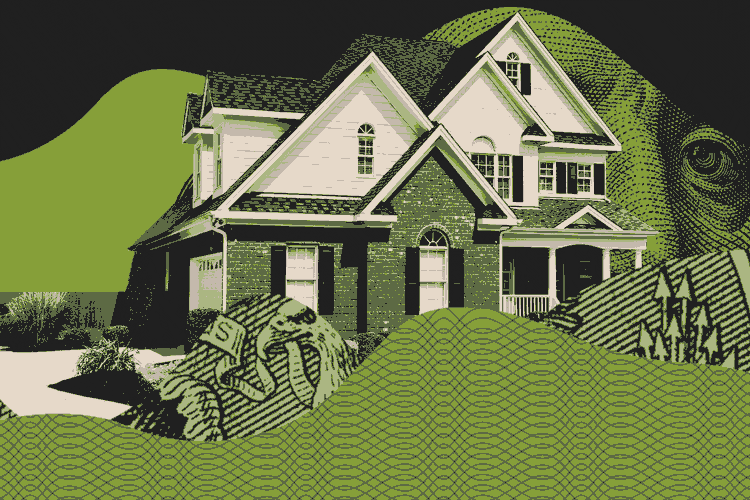The winds ripped the roof off of Tropicana Field and knocked the crane at a John Catsimatidis project into the Tampa Bay Times building. Tornadoes spawned across Florida and tore through homes. And the totality of the damage from Hurricane Milton is still being assessed.
What is known about Milton’s impact is that it could have been much worse. The storm formed as a Category 5 over the Gulf of Mexico, and fortunately weakened to a Category 3 by the time it made landfall on Wednesday night. Milton came on the heels of Hurricane Helene, which ravaged large swaths of the American South and has a death toll that is still growing.
Damages from both storms could cost as much as $200 billion.
The realities of climate change means the world is facing more extreme, more frequent catastrophes as witnessed in the aftermath of the recent hurricanes, as well as the Southern California wildfires.
While the Airport Fire in Orange and Riverside Counties is now 95 percent contained, according to the California Department of Forestry and Fire Protection, a reported 160 structures were completely destroyed, and another 34 damaged. More than half of the properties wiped out were homes, according to published reports.
The losses from these events are extraordinary examples of the kinds of risks homeowners and real estate investors face now and well into the future.
Last month, a report from S&P and Singapore’s sovereign wealth fund estimated REITs face $110 billion in climate hazard costs in the next decade. Looking out to 2050, the number rises to $559 billion. What’s more, climate change has caused property values to fall, insurance premiums to soar and insurers to abandon their customers altogether.
For real estate, the literal and figurative headwinds are dire.
Washing away
In addition to one-off weather events or even a series of events, climate change is also reshaping the map due to accelerated coastal erosion.
Experts say that rising sea levels are putting us at the mercy of mother nature from here out. Beach nourishment programs, seawalls and revetments are merely expensive, short-term solutions.
Still, some individuals with deep pockets are willing to take a risk, while perhaps being unaware of less-obvious repercussions.
Josh VanEmmerik was trying to sell his renovated, oceanfront home in Oahu’s North Shore for $2 million when it collapsed into the sea.
Within days of losing the home the state of Hawaii slapped him with a lawsuit, saying the mess is his to clean up, SFGate reported.
In the case of Hawaii v. VanEmmerik, the state is seeking an injunction to get the debris from the home removed from the state-owned beach it collapsed onto, and wants him to foot the bill.
“Private landowners take a risk when they allow structures to be so close to the shoreline,” Deputy Attorney General Danica Swenson said in an interview with local outlet Hawaii News Now. “The people of Hawaii are now confronted with the consequences of property owners’ failures to take heed of the ocean’s warning signs of erosion.”
VanEmmerik is not the only buyer eschewing the planet’s warnings. Last month, Curbed interviewed Nantucket homeowners buying properties on the brink.
“There is now this small submarket of homes that people are willing to lose,” Nantucket agent Shelly Lockwood told the outlet. “You can slap some white paint on it, fill it with Ikea furniture, and rent it out for $30,000 a month, and you might get it for ten years or you might get it for one.”
Billionaire Starwood Capital Chairman Barry Sternlicht was forced to demolish an oceanfront Nantucket home earlier this year. A short ferry ride away on Cape Cod, one homeowner said he bought his beach house at a 67 percent discount for $395,000 and is just seeing “what happens,” with the creeping erosion.
Luxury homeowners in Jupiter Inlet Colony, Florida didn’t have to wait to find out. In February, pumping surf washed out the land under Kid Rock and Conair heiress Babe Rizzuto’s oceanfront homes. Her home was on the market at the time, asking $22.5 million, but the price has since dropped to $19.5 million.
It’s not just the beaches eroding. Property values also wane in the face of extreme risk. But it’s taboo to even acknowledge the danger properties face, according to Dr. Gary Griggs, a coastal erosion expert and professor at the University of California, Santa Cruz.
“Nobody wants to say that. Nobody wants to admit it because they don’t want to lower their property values,” he said in an interview after the Jupiter Inlet Colony destruction.
Fraying safety net
As climate risk increases for these markets, so do the insurance premiums –– if providers haven’t already made an exit. Last month, State Farm announced plans to cut 1 million policies in California. It was another blow from the state’s largest insurer, which had announced in 2023 it would stop accepting new policy applications in The Golden State.
Insurers are also fleeing Florida, which faces rising tides, stronger hurricanes, and billions of dollars in damages in the new climate reality. Those that remain are dramatically increasing their premiums.
Luxury homeowners should be especially worried, according to Citizens Financial Group, which reports homes with mortgages north of $1.5 million saw premiums increase by 130 percent over the past 4 years.
“The risk level is rising rapidly,” CoreLogic chief innovation officer John Rogers told The Real Deal earlier this year. “For insurers to price correctly, unfortunately they need to increase [rates] right now.”
